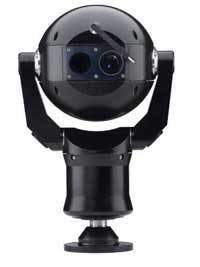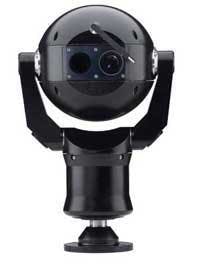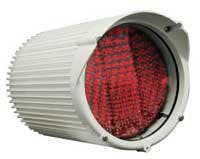Extreme CCTV introduces thermal and CCD camera for military applications
Extreme CCTV Inc. in Burnaby, British Columbia, is introducing the Moondance dual-spectra ruggedized PTZ camera for military applications. The camera’s thermal and charge-coupled device (CCD) sensors are for threat detection and identification. The Moondance camera has a 50-millimeter thermal imager for covert detection surveillance from as far away as 7,380 feet, while a CCD sensor with an 18x or 36x zoom module delivers identification-level video. Incorporating a 320-degree tilt, the Moondance camera enables viewing directly above and below the camera. A brushless motor with presets to less than 0.08 degrees enables precise target tracking. Featuring an IP67/NEMA 4X-rated housing, the camera is for important defense applications. For more information, visit Extreme CCTV online at www.ExtremeCCTV.com.
ULIS to supply French army with uncooled thermal sensors
ULIS, an infrared vision specialist making uncooled thermal sensors for military applications, has signed a five-year contract with Sagem Défense Sécurité (Groupe SAFRAN) as a primary source of supply for major weapon sights, handheld equipment, and military programs for cameras, including the French army’s Future Infantry Soldier System (FELIN). Uncooled thermal sensors, known as microbolometers, will be used to fit the thermal-imaging rifle sights, multifunction goggles, and cameras for day and night operation and improved target acquisition. Under the agreement, ULIS will deliver its uncooled 384x288, 25-micron microbolometers, with the first delivery due at the end of the year. The contract also provides for an extension to supply other higher-performance uncooled infrared products, such as 640x480, 25-micron and 1024x768, 17-micron microbolometers, for several military programs and new markets. Financial terms were not disclosed. Microbolometers detect thermal energy over the long-wave range (8 to 14 microns). When this happens, the detector heats up in response to the absorbed energy and changes its electrical resistance. The resistance change is processed to create an image.
Cree introduces small LEDs for lighting applications
Cree Inc. in Durham, N.C. is introducing the XLamp XP-E and XP-C light-emitting diodes (LEDs) lighting applications. The LEDs measure 3.45 millimeters square by 2 millimeters high and are for backlighting, signage, outdoor, indoor, and portable lighting. Available bins for XLamp XP-E LEDs include minimums of 100 lumens at 350 milliamps in cool white (5000 K to 10000 K) and 80.6 lumens at 350 milliamps in warm white (2600 K to 3700 K). For more information, visit Cree online at www.cree.com.
Videolarm offers IR illuminator with adjustable angles and power settings
Videolarm in Decatur, Ga., is introducing the IR200-36 infrared illuminator for night video surveillance. The projecting beam angle can be adjusted manually from 30 to 60 degrees with a flathead screwdriver. The IR power setting can be adjusted to reduce hot spots and washouts. The adjustable IR illuminator provides nighttime and low-light video surveillance, illuminating distances from 100 to 660 feet. The illuminator weighs 3.5 pounds and measures 11.5 by 7 by 7 inches. LED technology delivers a 20,000-hour life expectancy and an integrated light sensor automatically activates and deactivates the infrared function. “This is the one IR illuminator that will meet the surveillance needs of an organization today and can easily adapt to meet its night video surveillance needs in the future,” says Videolarm president Ray Pagano. For more information, visit Videolarm online at www.videolarm.com.
Princeton Lightwave and Nextreme team to cool next-generation imaging sensors
Princeton Lightwave Inc. in Cranbury, N.J., and Nextreme Thermal Solutions Inc. in Durham, N.C., are working together to develop a shortwave infrared (SWIR) focal-plane sensor with thermoelectric cooling. The solution is based on Princeton Lightwave’s indium gallium arsenide (InGaAs) focal-plane arrays and Nextreme’s thermal bump technology. Company officials say the new technology will reduce power consumption and weight, improve overall performance, and enable wide deployment of SWIR sensors for night vision. InGaAs shortwave infrared sensors are of interest to the military as they are digital devices that can be networked. They are sensitive to the nightglow radiation at 1.6-micron wavelengths, enabling operation in total darkness. Additionally, this part of the spectrum is eye-safe, allowing use of laser illuminators invisible to current night-vision devices. Detector performance is usually limited by thermally-generated noise, which can be reduced by cooling. The two companies are working on integrating thin-film thermoelectric coolers with focal-plane arrays to provide night-vision imaging solutions. For more information, contact Princeton Lightwave online at www.princetonlightwave.com, or Nextreme at www.nextreme.com.





